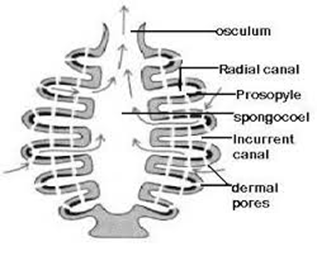Sycon Canal System With Diagram
Canal system in Sycon A sea creature called a sycon, or scypha , is usually found clinging to rocks or other surfaces. These creatures have tube-shaped bodies that open outward with the help of a hole called an Osculum . They have tiny openings called Spiracles and Ostia all over their bodies to let water in. This water flows through canals inside their bodies and comes out through the Osculum, which is a larger opening used for breathing. We'll observe the shape of this canal system, why it is essential for those animals, type of canal system , and its significance. The Sycon Type Canal system is the unique feature of the phylum Porifera . This system is also known as the aquiferous canal system . This system supports the significant function of the body like nutrition, respiration, excretion, etc. History Overview - Gran...





Thank You
ReplyDelete